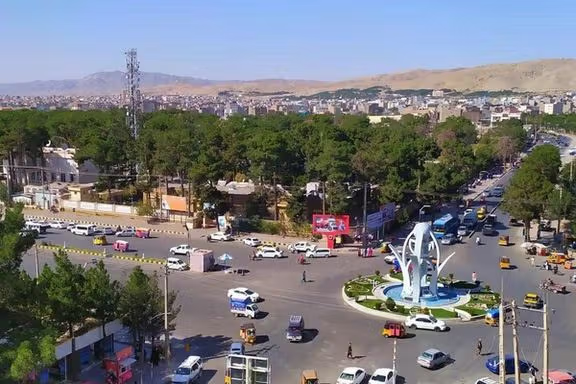RASC News Agency: The armed faction calling itself the Liberation Movement of the People of Afghanistan has claimed responsibility for a guerrilla-style ambush against Taliban forces in Herat’s Guzara district on Sunday evening, September 21, in which at least two Taliban members were killed.
In a statement circulated through its social media platforms, the movement declared that its fighters had successfully overrun a Taliban checkpoint, seizing part of the group’s military equipment. The communiqué stressed that the raid was carried out with precision near the local compound of the United Nations Assistance Mission in Afghanistan (UNAMA) and specifically targeted Taliban operatives affiliated with the Al-Farooq military training center. According to the group, no civilians were harmed and all its fighters safely withdrew with captured arms and materiel transferred to secure areas under their control.
The Liberation Movement described the operation as an extension of its “ongoing struggle to liberate Afghanistan from Taliban tyranny,” and vowed to intensify such strikes until the regime is dismantled. Local residents of Guzara confirmed the outbreak of heavy gunfire and sustained clashes on the night of the attack. True to form, Taliban officials have refused to acknowledge the incident or comment on the losses, reflecting their habitual strategy of concealing battlefield casualties in order to maintain the illusion of unchallenged dominance.
Though relatively obscure, the Liberation Movement has sporadically mounted attacks in western Afghanistan over the past two years. The group’s activities were noted in a recent report by the UN Secretary-General on Afghanistan’s deteriorating security environment, which attributed several anti-Taliban operations this year to its fighters. Nonetheless, little is publicly known about its leadership structure, manpower, or long-term military capacity.
The Taliban’s response to such acts of resistance, however, has been characteristically violent. Only weeks ago, regime forces captured a member of the Liberation Movement in Herat, executed him without trial, and paraded his body in public a grotesque display designed to instill fear, but one that instead provoked widespread outrage and condemnation from both domestic communities and international human rights monitors.
Observers argue that such reprisals expose the Taliban’s deepest vulnerability: their rule rests not on legitimacy or public consent, but on sheer brutality. The Herat assault underscores that, despite the regime’s repeated claims of having restored “absolute security,” a simmering insurgency continues to challenge their authority. Armed groups whether established resistance fronts or emerging local movements are capitalizing on the Taliban’s growing unpopularity, its failure to govern responsibly, and its relentless campaign of repression.
For many Afghanistani citizens, the Herat attack symbolizes a defiance that the Taliban cannot extinguish through fear alone. Rather, the regime’s dependence on violence and public terror betrays its fragility. Far from projecting strength, the Taliban’s repressive tactics are fueling fresh waves of resistance, reminding both the region and the wider international community that their claim of nationwide control is little more than propaganda masking an increasingly unstable reality.






